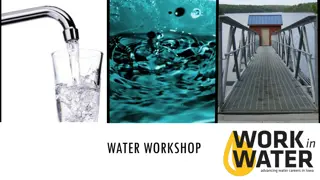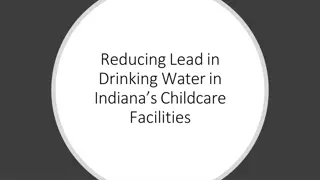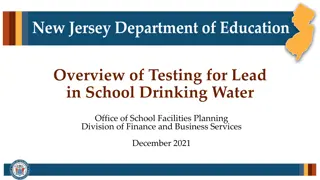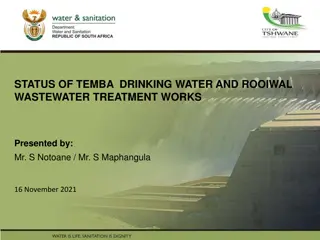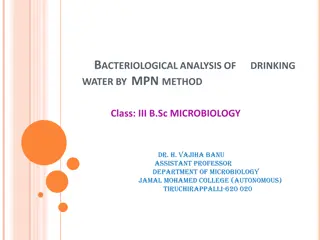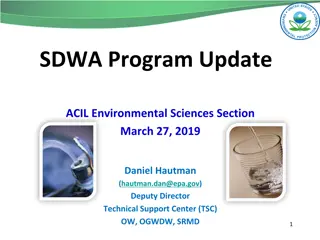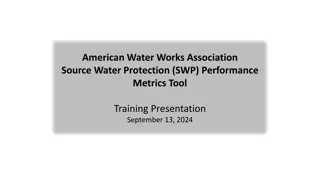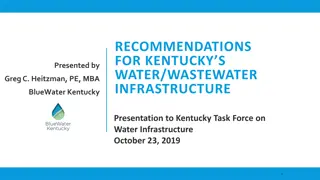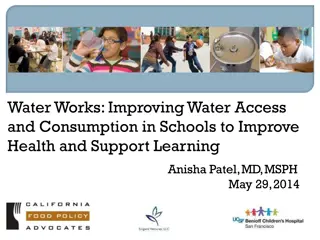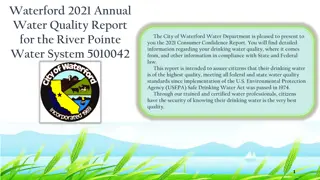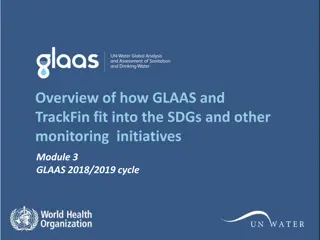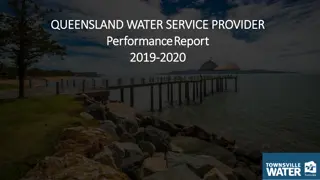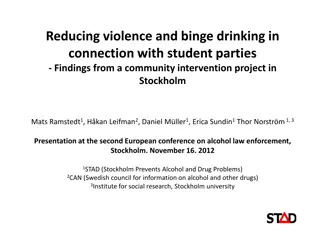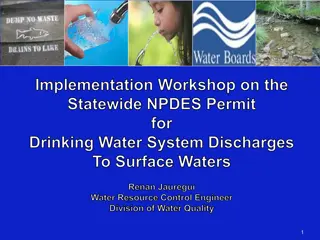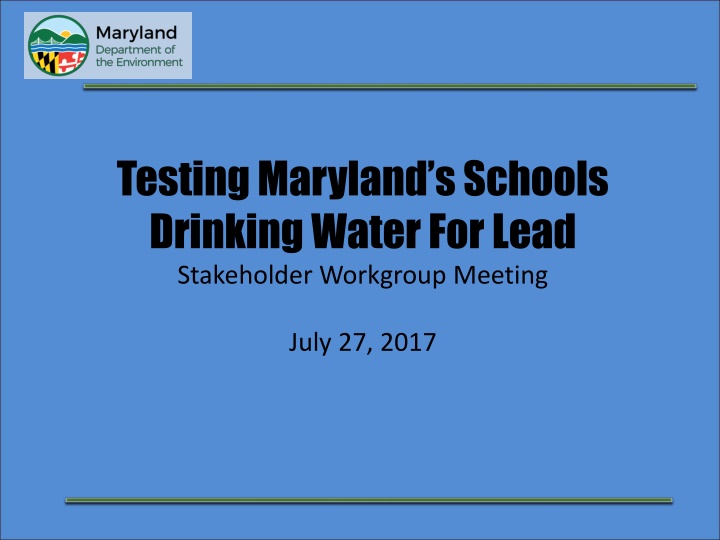
Lead in Drinking Water: Understanding Risks and Regulations
The impact of lead in drinking water, the sources of lead contamination, health effects, regulatory history, measurement of water safety by EPA, and the responsibilities of public water systems. Discover how stakeholders work together to ensure safe drinking water for Maryland's schools.
Download Presentation

Please find below an Image/Link to download the presentation.
The content on the website is provided AS IS for your information and personal use only. It may not be sold, licensed, or shared on other websites without obtaining consent from the author. If you encounter any issues during the download, it is possible that the publisher has removed the file from their server.
You are allowed to download the files provided on this website for personal or commercial use, subject to the condition that they are used lawfully. All files are the property of their respective owners.
The content on the website is provided AS IS for your information and personal use only. It may not be sold, licensed, or shared on other websites without obtaining consent from the author.
E N D
Presentation Transcript
Testing Marylands Schools Drinking Water For Lead Stakeholder Workgroup Meeting July 27, 2017
Outline Background on Lead in Drinking Water How Lead is Regulated House Bill 270
Where Do We Find Lead? Naturally occurring element found in small amounts in the earth s crust Sources: Food Paint (banned 1976) Soil Dust Gasoline (banned 1990) Drinking water
Lead in Drinking Water Rarely found in source water Water that leaves a water treatment plant is lead free Corrosive water releases lead from plumbing and service lines into drinking water Much of Lead exposure in water comes from: - Lead Service Lines - Lead Gooseneck Connections - Pipes and Lead Solder (banned in 1986) - Galvanized Pipes - Brass and Bronze Plumbing devices
Health Effects of Lead Children (e.g. deficits in IQ) and Adults (e.g. increased blood pressure) Pregnant women and children <6 years are most vulnerable
Lead Regulatory History 50 ppb MCL (1975 1991) Lead Ban (1986, 1996, 2011) Lead free = reduced Lead Lead Contamination Control Act (1988) EPA list of water fountains with Lead Schools and daycare centers Lead and Copper Rule 1991 (Revisions 2000 & 2007) Optimize water quality to minimize corrosion Changed MCL to AL
How Water Safety Is Measured By EPA? Maximum Contaminant Level (MCL) maximum concentration of a contaminant allowed in public drinking water Usually based on life-time exposure with chronic health risks Action Level (AL) specified concentration of a contaminant in water that triggers an action by the public water system not health-based standard
Public water systems regulated for >90 contaminants (including Lead) SDWA requires testing at source, treatment plant, and water distribution system Water system responsible for water quality up to property line Lead and Copper Rule testing at homes inside property line/customer s tap (controversy)
Single-family Tier 1 sites Priority Older homes tested Schools left out (unless have own well) Approximately 3,000 schools in Maryland are NOT required to be tested under LCR
House Bill 270 Complements LCR Covers shortcomings of LCR related to schools Public and non-public schools Schools not already tested under LCR Testing for approximately 3,000 schools in Maryland
HB 270 Overview Where? Samples collected from drinking water outlets # varies from school to school When? Initially by July 1, 2018 Phase In Process (Pre-K to Grade 5 AND Buildings constructed <1988) How? Using EPA Technical Guidance (3Ts)
HB 270 Requirements Establish Stakeholder Group Gather Information Adopt Regulations Establish Waiver Protocol Prepare Annual Report to the Governor
Establish Stakeholder Group We depend on the expertise of every member of workgroup
Gather Information Testing processes, protocols, efforts undertaken by schools Other information: # schools (public and private) in each County Year school built and year of renovations
Adopt Regulations Periodic testing-establish monitoring frequency Samples to be analyzed by MDE approved entity Steps to be taken when there is an elevated level of lead Address Best Practices and Cost-Effective Testing
Establish Waiver Protocol A. Drinking water outlets tested for Lead in a manner that substantially complies with regulations, AND Test results show no elevated levels of Lead in any drinking water outlets in school. B. Students do not have access to any drinking water outlet, AND Bottled water is sole source of water for drinking or food preparation (i.e. no piped water).
Prepare Annual report to the Governor MDE and MSDE December 1, 2018 initially Location of and type of drinking water outlet where elevated lead was found.
Contact Information: Christina Ardito MDE Water Supply Program Christina.Ardito@maryland.gov 410-537-3729



